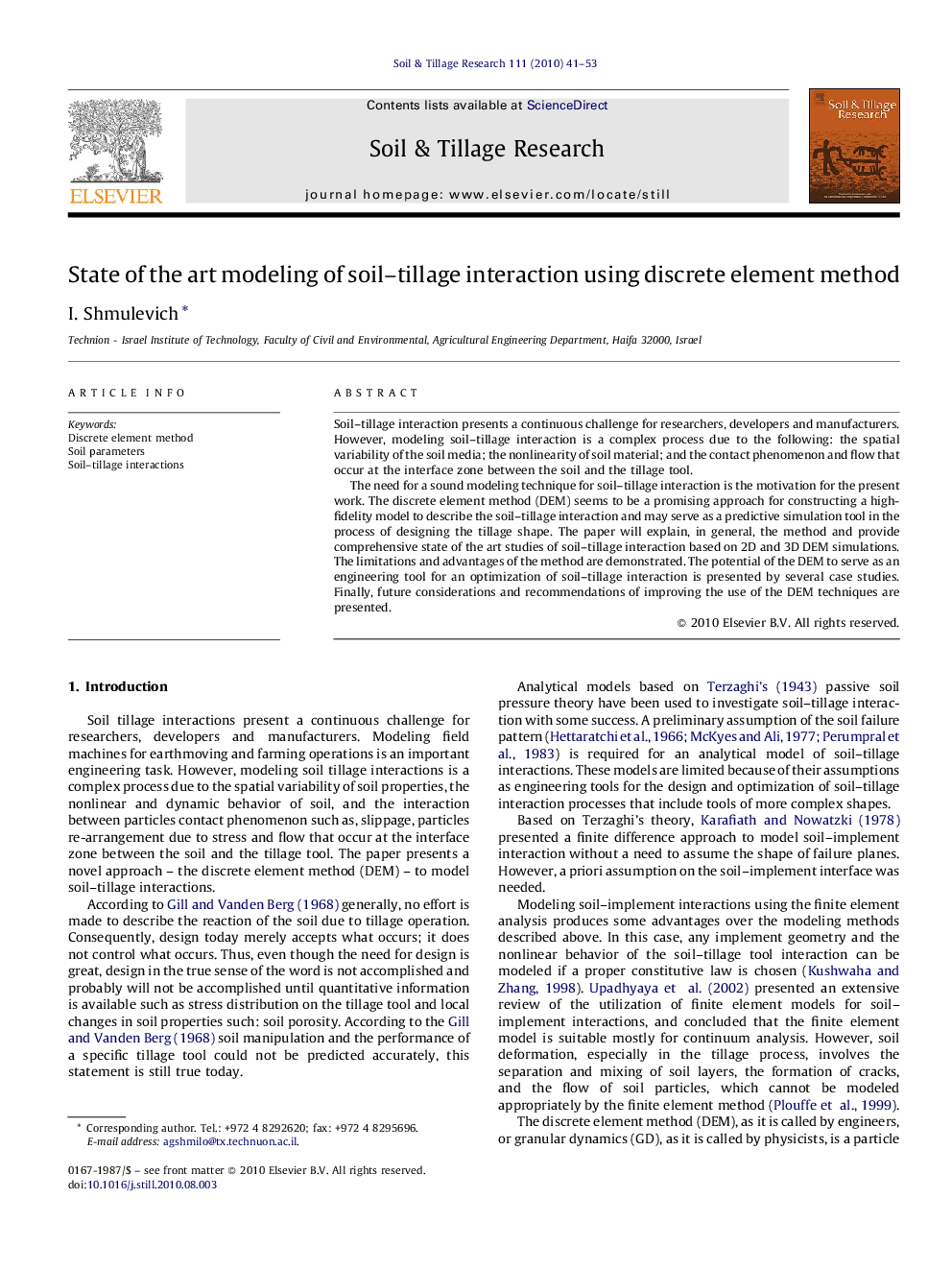| Article ID | Journal | Published Year | Pages | File Type |
|---|---|---|---|---|
| 306112 | Soil and Tillage Research | 2010 | 13 Pages |
Soil–tillage interaction presents a continuous challenge for researchers, developers and manufacturers. However, modeling soil–tillage interaction is a complex process due to the following: the spatial variability of the soil media; the nonlinearity of soil material; and the contact phenomenon and flow that occur at the interface zone between the soil and the tillage tool.The need for a sound modeling technique for soil–tillage interaction is the motivation for the present work. The discrete element method (DEM) seems to be a promising approach for constructing a high-fidelity model to describe the soil–tillage interaction and may serve as a predictive simulation tool in the process of designing the tillage shape. The paper will explain, in general, the method and provide comprehensive state of the art studies of soil–tillage interaction based on 2D and 3D DEM simulations. The limitations and advantages of the method are demonstrated. The potential of the DEM to serve as an engineering tool for an optimization of soil–tillage interaction is presented by several case studies. Finally, future considerations and recommendations of improving the use of the DEM techniques are presented.
Research highlights▶ Modeling soil-tillage interaction is a complex process. ▶ Discrete element method is a proper tool for modeling soil–tillage interaction. ▶ DEM can serve as an optimization tool in building soil tillage devices. ▶ Simulation with DEM can enriches the understanding of soil-tillage process. ▶ There is no yet a robust method for determining the parameters for DEM.
